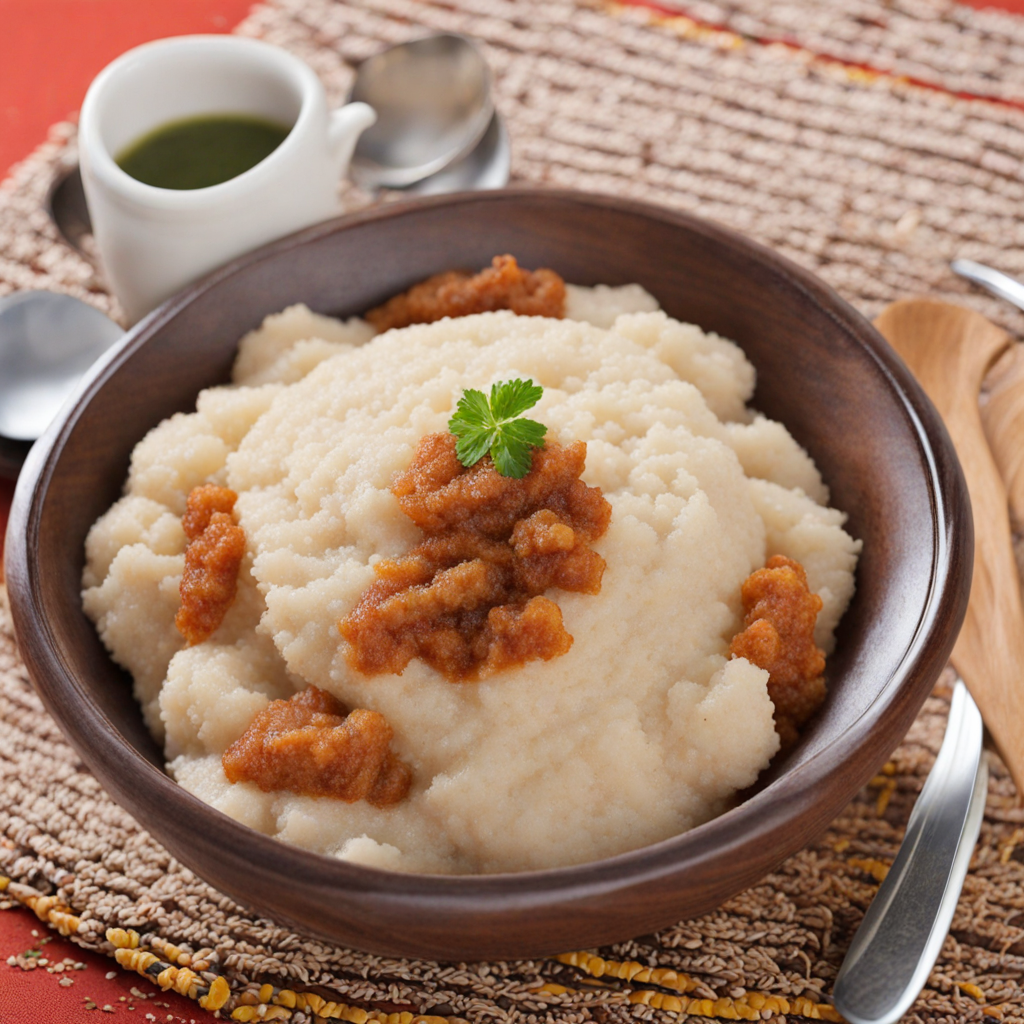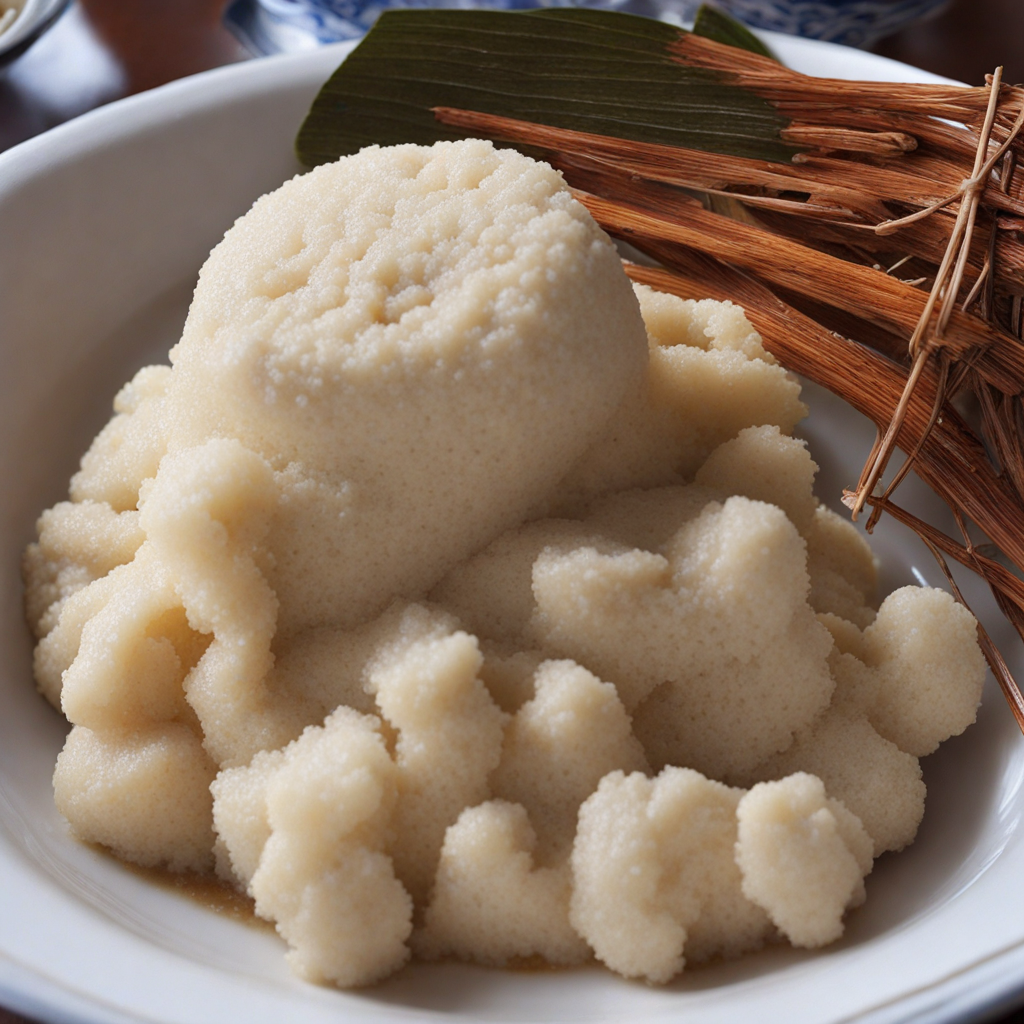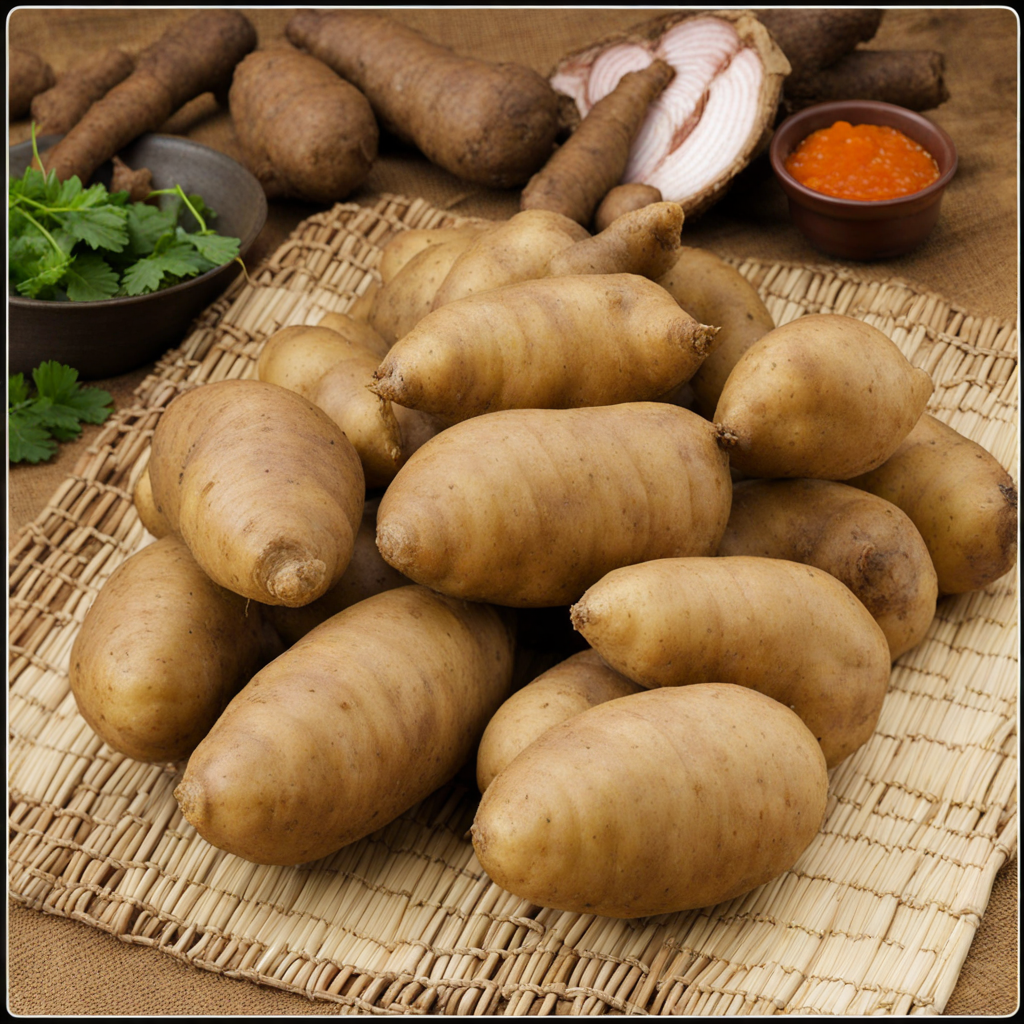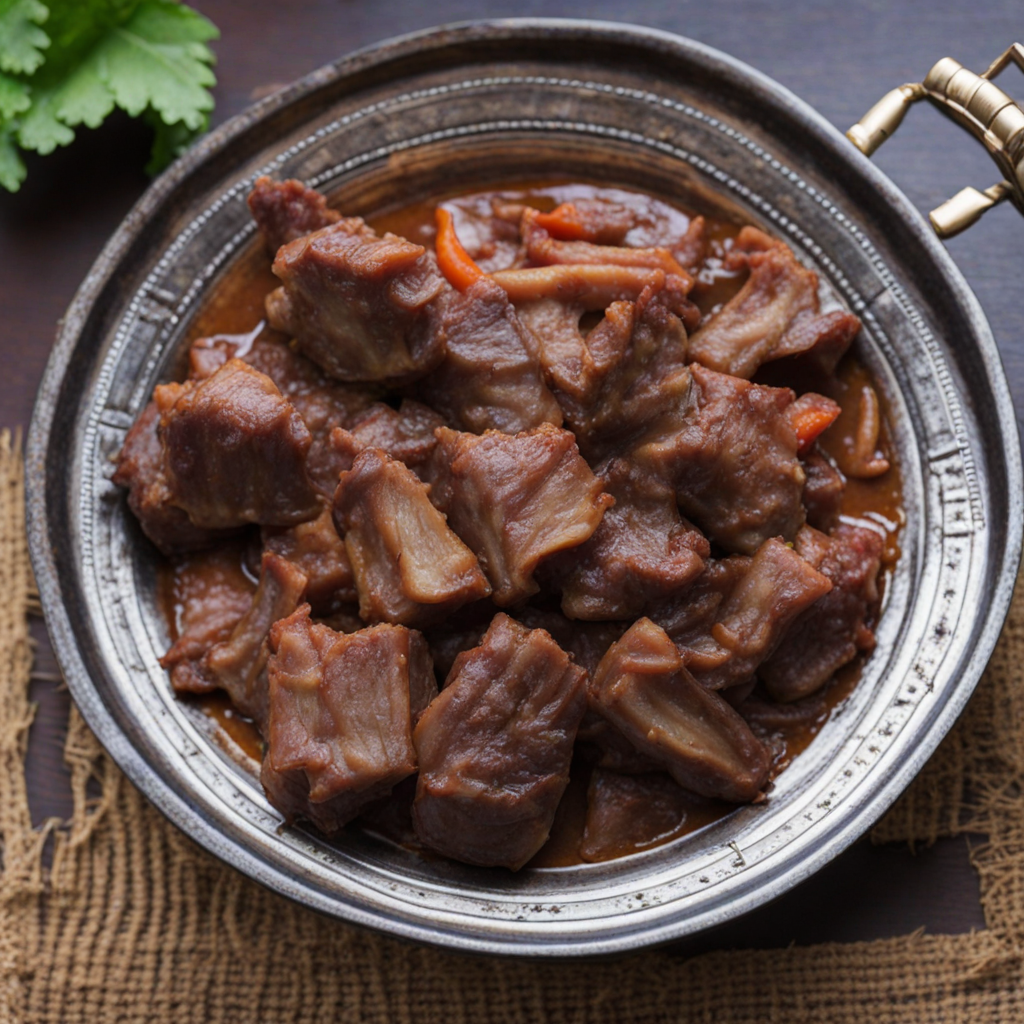Ubugari
Ubugari is a traditional Rwandan dish made from cassava flour, which is transformed into a dense, dough-like staple food. The preparation involves mixing the cassava flour with water and cooking it over heat until it achieves a thick, smooth consistency. The result is a hearty, white, and somewhat elastic food that can be molded into balls or served in slices. Its texture is somewhat similar to that of rice or polenta, making it a versatile accompaniment to various stews and sauces. Typically enjoyed during communal meals, Ubugari serves as an ideal canvas for the rich flavors of Rwandan cuisine. It is often paired with flavorful accompaniments such as Isombe, a dish made from cassava leaves cooked in groundnuts, or with spicy meat stews, which enhance the mild taste of Ubugari. The neutral flavor profile of this dish allows it to absorb the spices and seasonings of the dishes it is served with, creating a harmonious balance on the palate. Ubugari is not just a filling addition to a meal; it also holds cultural significance in Rwandan society, symbolizing unity and togetherness. Sharing Ubugari with family and friends reflects the communal spirit of Rwandan dining. This simple yet satisfying dish is a must-try for anyone looking to explore authentic African flavors and experience the warmth of Rwandan hospitality.
How It Became This Dish
Ubugari: The Heart of Rwandan Cuisine Ubugari, a staple food in Rwanda, is more than just a culinary delight; it is a symbol of resilience, tradition, and cultural identity. This starchy accompaniment, typically made from cassava or maize flour, has its roots deeply embedded in the history and social fabric of the Rwandan people. Its journey through time reflects the evolution of Rwandan society, from pre-colonial times to contemporary culinary practices. #### Origins of Ubugari The origins of ubugari can be traced back to the agricultural practices of the Bantu-speaking communities that settled in the region over a thousand years ago. As these communities established themselves, they began cultivating a variety of crops, including cassava and maize, both of which play a critical role in the preparation of ubugari. Cassava, in particular, became a significant food source due to its drought-resistant properties, making it a reliable crop in the often unpredictable East African climate. The method of making ubugari involves mixing flour—either from cassava or maize—with water and cooking it until it reaches a thick, dough-like consistency. The process is relatively simple, yet it requires skill and experience to achieve the right texture and taste. Traditionally, ubugari was prepared in large quantities, as it was a communal food often shared among family and friends during gatherings and celebrations. #### Cultural Significance Ubugari holds immense cultural significance in Rwanda. It is not just a food item but a symbol of unity and community. In Rwandan culture, sharing food is an essential part of social interaction, and ubugari often takes center stage during communal meals. It is typically served alongside various sauces, meats, and vegetables, allowing it to complement a wide array of flavors. The act of eating together fosters a sense of belonging and reinforces social bonds among family and friends. Moreover, ubugari is often associated with Rwandan hospitality. Visitors are welcomed with a meal that prominently features this staple food, signifying respect and generosity. Ubugari’s presence at significant life events—such as weddings, funerals, and public celebrations—further emphasizes its importance in Rwandan culture. It serves as a reminder of the nation’s agricultural heritage and the communal values that have been passed down through generations. #### Ubugari Through the Ages The history of ubugari cannot be separated from the broader historical context of Rwanda. The country has experienced significant turmoil, particularly during the colonial period and the devastating genocide in the 1990s. Throughout these challenging times, ubugari remained a constant in the lives of Rwandans, symbolizing endurance and hope. During the colonial era, when European powers imposed their governance and economic systems, traditional agricultural practices were disrupted. However, the resilience of Rwandan farmers allowed them to adapt and continue producing crops that would lead to ubugari. Despite the changes brought on by colonialism, ubugari persisted as a staple food, embodying the strength of Rwandan identity. The genocide against the Tutsi in 1994 left deep scars on the nation, but food, including ubugari, became a means of healing and rebuilding communities. In the aftermath, Rwandans turned to food not only for sustenance but as a way to reconnect with their culture and each other. Ubugari was present at community gatherings aimed at fostering reconciliation, symbolizing a shared history and a collective path towards healing. #### Modern-Day Ubugari In contemporary Rwanda, ubugari is still widely consumed and cherished, though its preparation and presentation have evolved. While traditional methods of cooking remain prevalent, modern culinary influences have introduced variations and new ways to enjoy this staple. For instance, urbanization and globalization have led to the incorporation of ubugari into more diverse meals, including fusion dishes that blend Rwandan flavors with international cuisine. Ubugari is often found in restaurants and homes alike, and it continues to be a prominent feature in Rwandan celebrations. It is not uncommon for chefs to experiment with different types of flour, including sweet potato and millet, to create unique spins on this classic dish. Moreover, as Rwanda has embraced its status as a tourist destination, ubugari has become a culinary ambassador, introducing visitors to the rich tapestry of Rwandan culture. #### Nutritional and Economic Importance Beyond its cultural significance, ubugari also plays a crucial role in nutrition and the economy. As a carbohydrate-rich food, it provides essential energy needed for physical activities, especially in a predominantly agrarian society. The cultivation of cassava and maize not only supports local diets but also serves as an important economic activity for Rwandan farmers. The Rwandan government has recognized the value of these crops in promoting food security and economic development. Efforts to improve agricultural practices and promote local foods have led to a renewed interest in traditional staples like ubugari. This focus on local food systems is vital for sustainability and resilience, especially in the face of climate change and global food supply challenges. #### Conclusion Ubugari is a culinary treasure that encapsulates the essence of Rwandan culture and history. From its humble beginnings as a staple food of the Bantu farmers to its role as a symbol of community and resilience, ubugari has woven itself into the very fabric of Rwandan life. Its evolution through time reflects the enduring spirit of the Rwandan people, who have faced adversity with grace and unity. As Rwanda continues to develop and embrace its rich cultural heritage, ubugari remains a testament to the strength of tradition. It serves as a reminder of the importance of food in fostering connections, healing wounds, and celebrating life. In every bite of ubugari, one can taste the history, the struggles, and the triumphs of a nation, making it not just a dish, but a profound experience that connects the past to the present.
You may like
Discover local flavors from Rwanda







